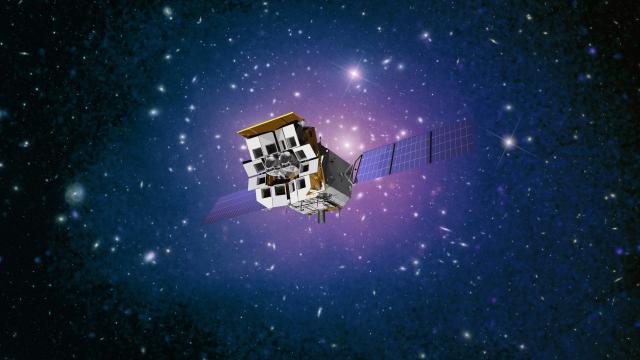The Einstein Probe, an X-ray telescope managed by the Chinese Academy of Sciences, will be ready to launch next month. The probe will look for transient events in X-ray light and try to answer some fundamental questions about black holes and gravitational waves.
Hubble, Chandra, Spitzer, and Webb. Undoubtedly iconic names, but now, in a long overdue development, we’re finally going to have a space-based telescope named after the famed German-born theoretical physicist, Albert Einstein.
The Einstein Probe was built in collaboration with ESA and the Max Planck Institute for Extraterrestrial Physics. In return for their contributions (in hardware and scientific consultations), ESA will get access to 10% of the probe’s data, according to an agency release. The release did not state when in January the launch would be attempted.
Einstein carries two science instruments: the Wide-field X-ray Telescope (WXT) and the Follow-up X-ray Telescope (FXT). The former uses the new “lobster-eye” optics to take data on a sweeping field of the sky; the latter scrutinizes specific objects spotted in WXT’s sweeping look at the cosmos.
The lobster-eye optics means that the WXT takes in X-ray light in square tubes in a grid, similar to a lobster’s parallel square pores. Using this technology, the Einstein probe will be capable of observing 3,600 square degrees (just under one-tenth of the celestial sphere) in a single shot, according to ESA. In three 96-minute orbits of Earth, the probe can image almost the entire night sky.
Einstein will launch on a Long March rocket from the Xichang Satellite Launch Center in south-central China. The mission’s expected timeline is three years. Over its lifetime, the probe is expected to collect data that will shed light on several cosmic phenomena, including the frequency of black holes in the universe and their physics (including the nature of their feeding and the massive high-energy jets of matter they power).
The probe will also study stars that go supernova and the sources of gravitational waves, which include black holes and neutron stars. Einstein will emit alert signals to other telescopes when notable events are found, helping scientists to collect as much data as they can on fleeting phenomena.
